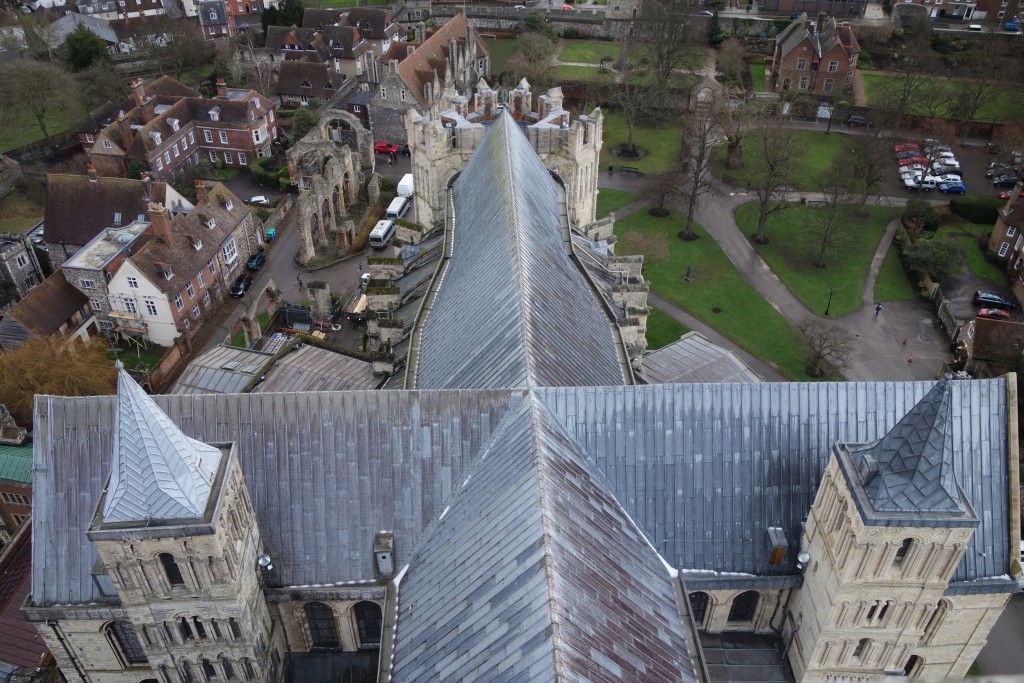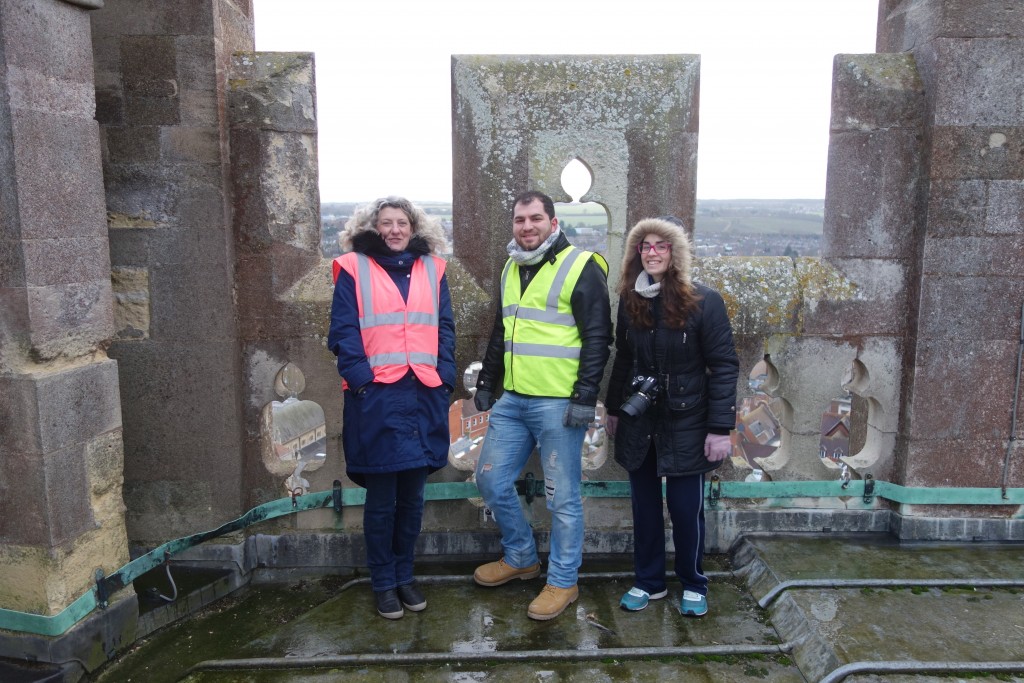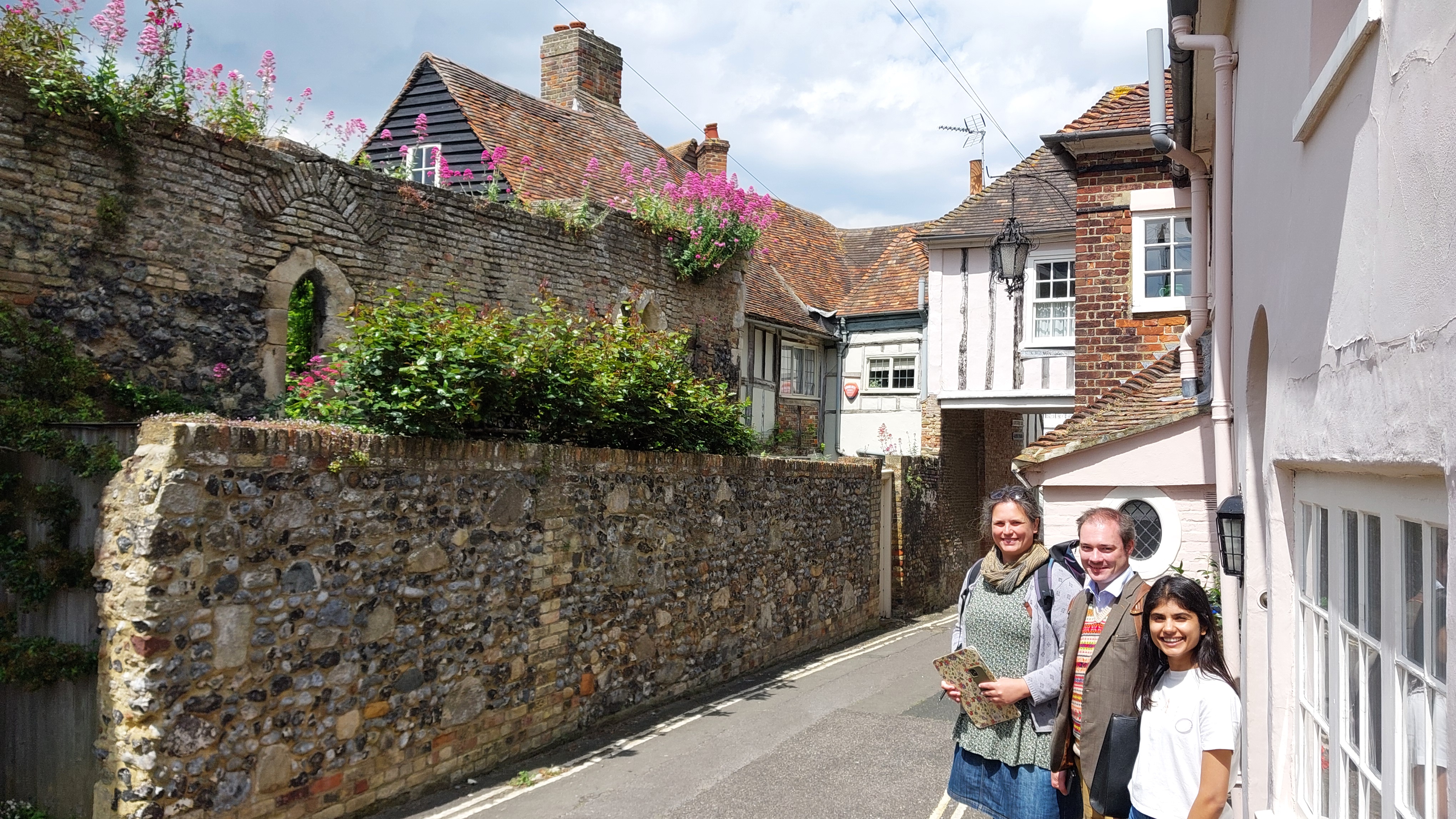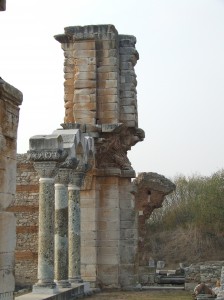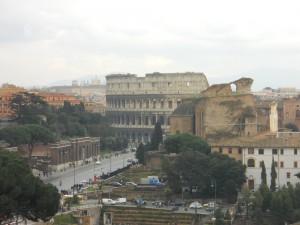That Canterbury Cathedral constitutes a fine example of Gothic and Romanesque architecture is widely known. What few people know is that this same building has been restored and partly rebuilt countless times, and, as a result, exemplifies various attitudes to conservation. In our last visit to this monument, we were accompanied by the head of Stone Conservation at the Cathedral, Ms. Heather Newton. Ms. Newton gave us a rare opportunity to explore “the unseen world” of the roof and the tallest tower, Bell Harry. The roof, mostly dating back to the Tudor period, has been divided to several rooms for fire protection. Its beams have been restored numerous times following the rotting of the original timbers. Circulation inside the roof was through a series of timber corridors, which offered access to the ceiling without loading the nave vaults below them.
The most challenging part of our visit was the ascent to the top of Bell Harry, the tower over the crossing. On the base of the tower, we found a sophisticated crack monitoring gauge and a humidity meter that records the micro-climate of the cathedral’s interior. After hundreds of steps, we reached a room where we found the pulley mechanism for the lifting of building materials. On the top of the tower, apart from the old bell mechanism, there is a microscopic meteorological station which is linked to a central computer inside the Cathedral. The highest point of the cathedral is exposed to the weather, and this has caused the decay of the limestone there. Unfortunately, as Ms. Newton explained,this decay seems to have been accelerated by “plastic repairs” carried out in the 1930s. These involved the use of cement mortar to fill cracks and to recapture the lost profiles of stone elements. This hard, impermeable mortar prevents the “breathing” of the wall and the evaporation of moisture. Trapped in the core of the wall, moisture accelerates stone decay caused by frost weathering and the crystallization of salts.
Zoi Kokkoni
